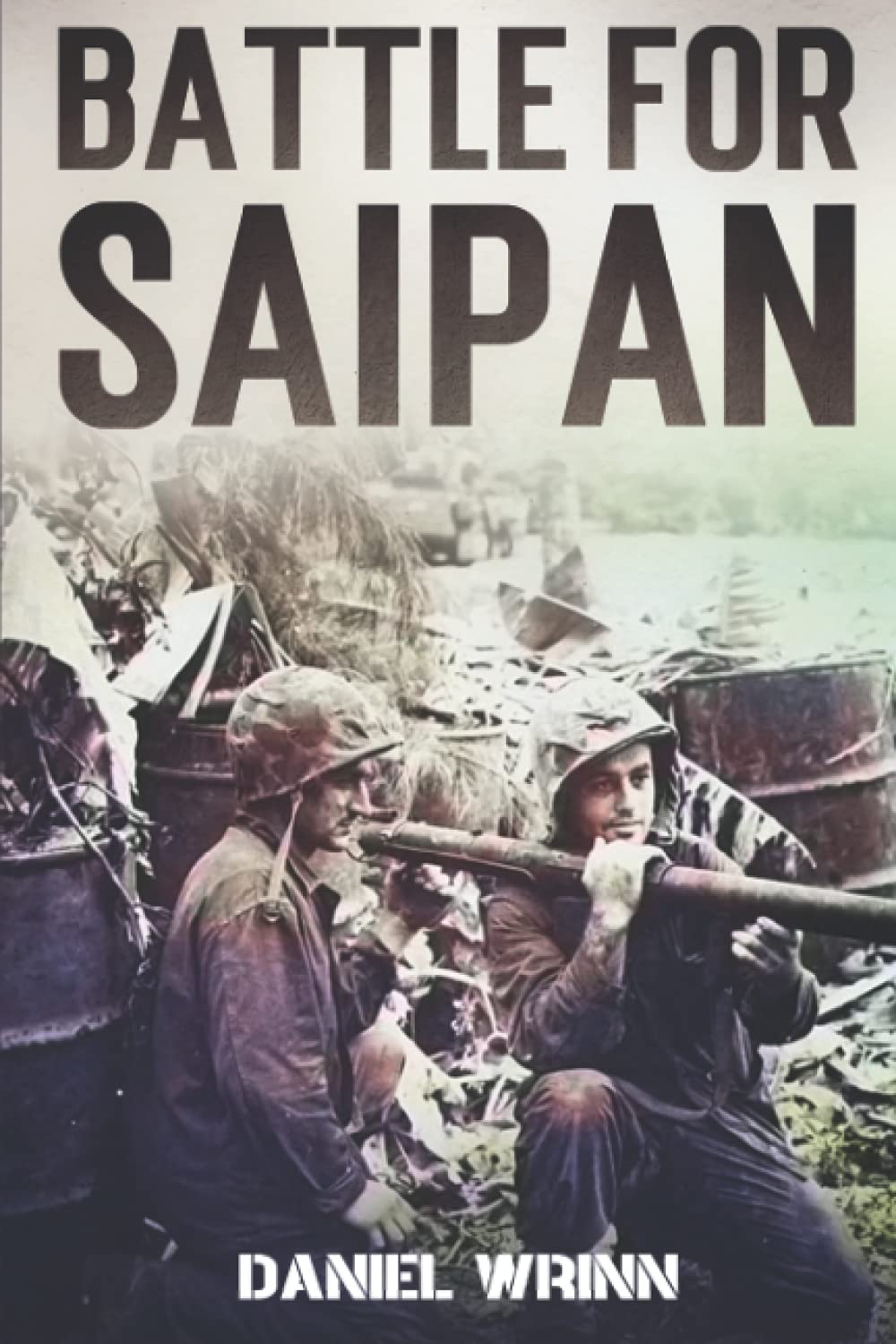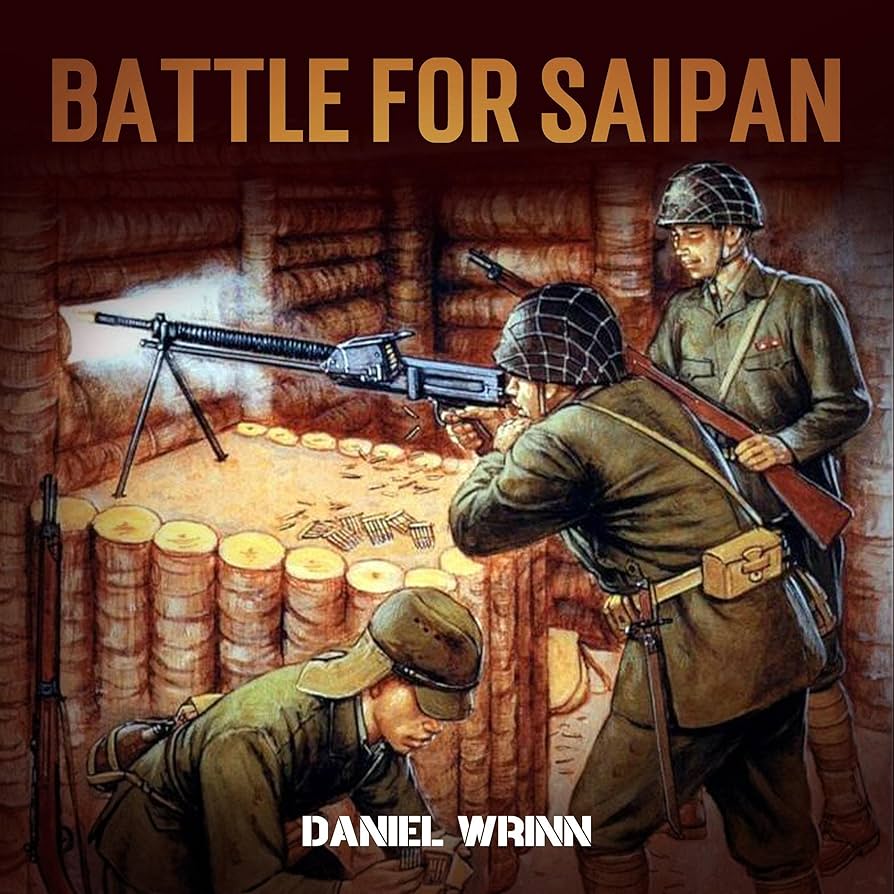The Battle of Saipan, fought in June 1944, stands as a pivotal conflict in the Pacific Theater of World War II, marking a significant shift toward total war between the United States and Japan. With approximately 95,000 American troops launching an assault against entrenched Japanese defenses, this battle was not merely a military engagement but a critical step in establishing a strategic foothold for subsequent operations against Japan. The documentary “Battle of Saipan 1944: Total War in the Pacific” meticulously examines the complexities of this confrontation, focusing on the military strategies employed, the terrain challenges faced, and the tragic consequences for both soldiers and civilians alike.
This article will outline the essential elements surrounding the battle, including the strategic significance of Saipan, the roles of U.S. military leaders such as Admiral Raymond Spruance, and the desperate circumstances of Japanese forces under General Yoshitsugu Saitō. The harrowing details of D-Day, the ensuing combat, and the aftermath will be explored, providing insights into how this brutal conflict encapsulated the stark realities of warfare in the Pacific, as well as the evolving tactics that characterized the engagements in this theater.
The Battle of Saipan: A Crucible in the Pacific Theater
Setting and Overview
Date and Location
The Battle of Saipan unfolded between June 15 and July 9, 1944, on the island of Saipan, part of the Northern Mariana Islands in the Pacific Ocean. This location, situated roughly 3,500 miles from Japan’s main islands, became a focal point in the broader Pacific War as American military forces aimed to secure strategic advantages.
Historical Context
By mid-1944, the Pacific War had shifted dramatically in favor of the Allies. The United States had gradually reclaimed territory previously occupied by Japan, and the fight for Saipan reflected the evolving dynamics of warfare in the Pacific. The fall of Saipan was integral to cutting off Japanese supply lines and creating bases for future air offensives against the Japanese home islands.
Purpose and Goals of the Battle
The primary objective of the invasion of Saipan was to capture the island and its airfields to establish a staging ground for further military operations in the Pacific. Saipan was also critical for gaining control over the Marianas Islands, which would facilitate future strikes against Japan itself. The battle marked a transition toward total war, where the United States aimed not only to defeat Japanese forces but to dismantle their capacity to wage war.
Strategic Significance
Importance of Saipan
Saipan’s geographic position made it a pivotal asset in the Pacific Theater. Control over the island allowed the United States to threaten the Japanese home islands directly and supported the strategic need for airbases from which B-29 bombers could operate more effectively. This control was essential for the United States to project force further into the Pacific, reducing the logistical challenges associated with extensive supply lines.
Control of the Marianas Islands
The capture of Saipan, along with nearby Tinian and Guam, was instrumental in tightening the noose around Japanese-held territories in the region. The Marianas, with their existing infrastructure, enabled the establishment of bases capable of launching air assaults deep into Japanese territory, fundamentally altering the strategic landscape of the war.
Establishing Airbases for Future Operations
By establishing airbases on Saipan, the United States could facilitate long-range bombing missions aimed at crippling Japan’s industrial capacity. This shift toward direct assault on Japan’s mainland marked a new phase in the war, one that highlighted the importance of airpower in achieving military objectives.

US Military Strategy
Admiral Raymond Spruance’s Leadership
Admiral Raymond Spruance, commander of the U.S. Fifth Fleet, orchestrated the battle’s strategies with a keen understanding of naval warfare and the dynamics of infantry operations. His leadership emphasized coordinated attacks between air and ground forces, aiming to maintain the initiative throughout the campaign.
Troop Deployment and Landing Tactics
The assault on Saipan involved a multi-faceted approach. Approximately 95,000 American troops, primarily Marine Corps units from the V Amphibious Corps, were deployed in an amphibious assault against well-entrenched Japanese positions. Spruance’s plan involved landing at four designated beaches with specific contingents assigned to each area, emphasizing rapid movement and securing positions before Japanese counterattacks could occur.
Utilization of Landing Vehicle Tracked (LVTs)
The innovative deployment of Landing Vehicle Tracked (LVTs) was central to the U.S. strategy. These amphibious vehicles allowed troops to navigate difficult terrain and disembark directly onto the shores of Saipan, overcoming obstacles that traditional landing crafts could not. This tactical decision reflected the U.S. military’s adaptation to the unique challenges posed by the war in the Pacific.
Japanese Defenses
Leadership of Admiral Chūichi Nagumo and General Yoshitsugu Saitō
The Japanese defense of Saipan was led by Admiral Chūichi Nagumo, a veteran commander who had been pivotal in earlier engagements, and General Yoshitsugu Saitō, responsible for ground operations. Despite their experience, the Japanese forces faced significant disadvantages in terms of resource allocation and preparedness.
Troop Strength and Preparedness
The Japanese garrison on Saipan comprised approximately 32,000 troops, poorly equipped and sustained, following a series of supply shortages exacerbated by American submarine efforts. The measures taken by the Japanese to reinforce their positions in anticipation of the U.S. invasion did little to level the playing field against a superior U.S. military force.
Defensive Zones Strategy
Saitō’s strategy involved a division of the island into four defensive zones, each fortified to counter the expected American assault. This tactical decision demonstrated a recognition of the need for organized resistance, yet the underlying issues of morale and preparation undermined these defensive efforts significantly.

D-Day and Initial Assault
June 15 Landings
The American landings commenced on June 15, 1944, with a meticulously coordinated aerial and naval bombardment intended to soften Japanese defenses before the marines landed. This initial barrage showcased the United States’ intensive preparations for the assault on Saipan.
Bombardment and Initial Troop Waves
The bombardment preceding the landings was intended to create gaps in Japanese defenses and diminish their ability to respond effectively. However, as the first waves of Marines approached the beaches, they encountered a series of unexpected challenges that would shape the ensuing battle.
Challenges Encountered During Landings
Navigational difficulties and unexpected artillery fire from concealed Japanese positions resulted in heavy casualties among the initial waves of assault troops. The combination of rugged terrain and unanticipated enemy fire inhibited the Americans’ ability to make rapid gains during the first hours of the invasion, highlighting the unpredictable nature of warfare.
Challenges Faced
Terrain and Logistics Issues
The physical geography of Saipan presented serious obstacles for U.S. forces. Rugged terrain limited movement and complicated resupply efforts, demanding effective logistical coordination to sustain the advancing troops. This terrain, dense with jungle and elevated positions, gave the Japanese defenders a distinct advantage.
Role of Marine Depot Companies
To address the ongoing logistical challenges, Marine Depot Companies played a vital role in ensuring that front-line forces received consistent supplies and support. Their contribution was essential to maintaining momentum in the battle, particularly as U.S. forces faced strong resistance.
Direct Fire from Japanese Forces
American troops were subjected to sustained harassment from Japanese forces entrenched in fortified positions. As they advanced, the Marines faced direct fire that caused significant attrition rates. This reality forced commanders to adapt their strategies in response to the tenacity of the Japanese defense.

Casualties and Civilian Impact
Military Casualties Overview
The Battle of Saipan resulted in considerable military casualties on both sides. U.S. forces suffered thousands of troops lost or injured, while Japanese casualties were markedly higher due to their entrenched positions and the ferocity of American assault tactics. The high casualty rate illustrated the brutal nature of this phase of warfare.
Community and Civilian Suffering
The suffering caused by the battle extended beyond military personnel, as Saipan was home to a civilian population that endured tremendous hardship. The conflict disrupted lives, leading to destruction and loss that reverberated through civilian communities, further emphasizing the total war strategy employed by both sides.
Long-term Effects on Saipan’s Population
Saipan emerged from the battle irrevocably changed. The long-term effects of the war on the island’s population were profound, leading to demographic shifts and lingering societal trauma. The conflict not only altered the landscape but also redefined the lives of those who lived there.
Outcome and Aftermath
Conclusion of Battle
The battle officially concluded on July 9, 1944, when U.S. forces declared Saipan secure. This strategic victory marked a significant turning point in the Pacific Theater, consolidating American control and setting the groundwork for future offensive operations.
Brutal Nature of the Pacific War
Saipan exemplified the brutal nature of the Pacific War, characterized by fierce fighting and high casualty rates. The intensity of the conflict emphasized the grim realities of war, shaping perceptions among military leaders and the public about the nature of future engagements.
Preparation for Tinian and Guam Campaigns
Following the victory at Saipan, the United States swiftly turned its attention to the neighboring islands of Tinian and Guam, expanding its campaign in the Marianas. The lessons learned and tactics developed during the Saipan battle would inform subsequent military operations in these critical locales.

Historical Context
Pivotal Moments in the Pacific Theater
The Battle of Saipan stands as a pivotal moment in the Pacific Theater, where casualties and strategic gains shaped future military operations. Reflecting the broader narrative of the conflict, it highlighted the challenges the United States faced in securing victory against a determined foe.
Military Strategy Evolution
Military strategies in the Pacific underwent notable evolution due to the experiences gleaned from Saipan. Commanders adapted and refined approaches to warfare, informing doctrine and shaping future engagements in the Pacific as the war progressed.
Public Perception of War During and After Battle
Public perception of the war shifted in the wake of Saipan, as the grim realities of casualty counts and the totality of warfare surfaced. These perceptions played a crucial role in influencing American sentiments and the narrative surrounding the Pacific War.
Conclusion
Reflection on the Battle’s Significance
The Battle of Saipan was significant not only for its immediate tactical outcomes but also for its long-term implications on the war in the Pacific. The U.S. secured a critical foothold that allowed for subsequent operations, signalling a pivotal shift in the momentum of the conflict.
Continued Resistance of Japan
Despite the loss of Saipan, Japan demonstrated a continued determination to resist. This resilience underscored the unyielding nature of the conflict, suggesting that further adjustments would be needed in American strategy and approach.
Preparation for Future Operations in the Pacific
As the United States geared up for further military operations, the legacy of Saipan loomed large, informing both strategy and public sentiment. The war was far from over, and preparations for future engagements in the Pacific would reflect the harsh lessons learned on the battlefield, a harbinger of the brutal campaigns yet to come.

